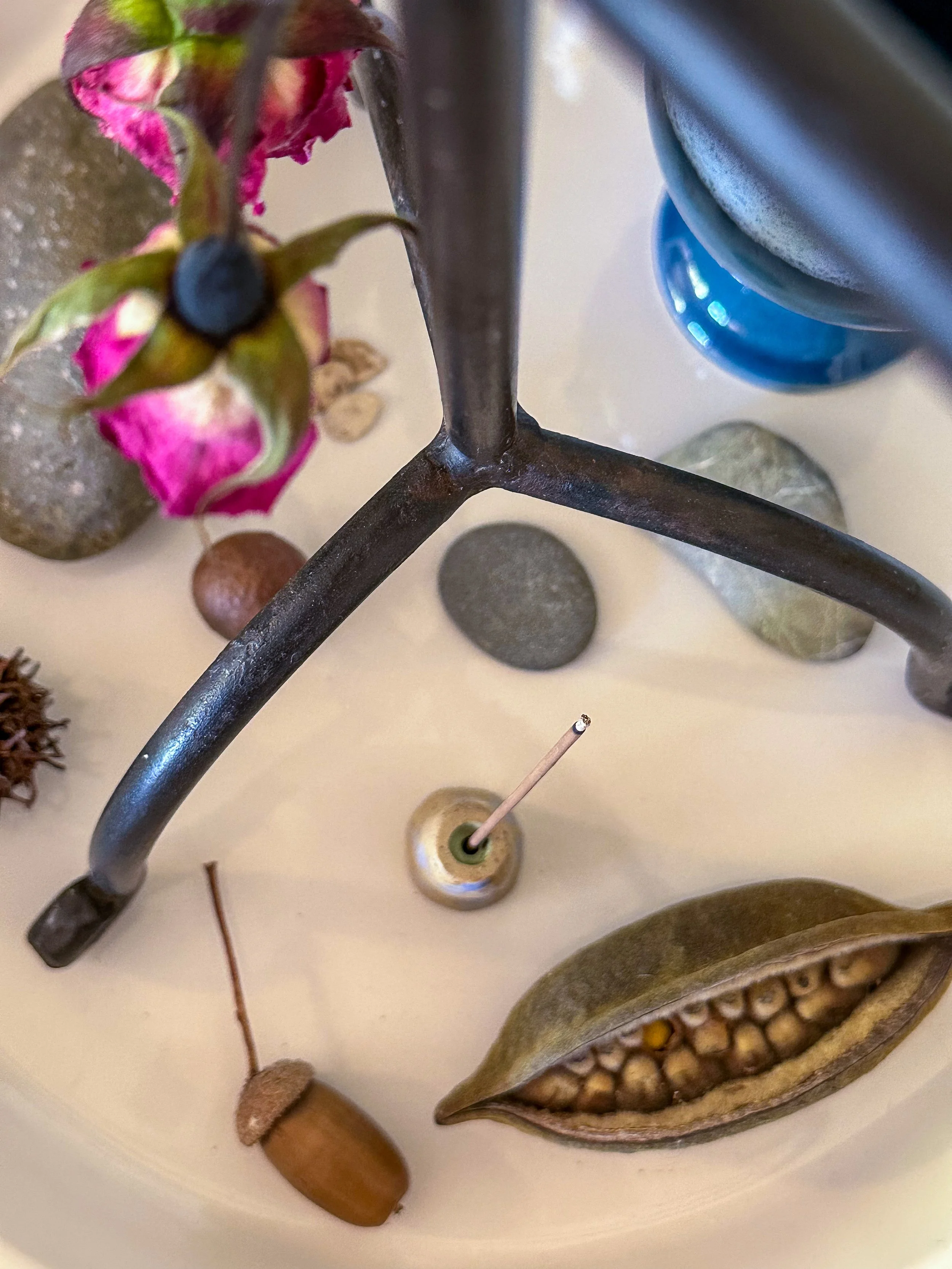Botanic: Agarwood (Oud, Aloeswood, Agar)
Binomial name: Aquilaria genus (native to South East Asia), many species.
Scent: Woody, fruity, leathery, lightly floral; you can find it in my Oak Moss and Vetiver incense sticks.
Function: In incense making agarwood is used as an aromatic, but can also be used as a base material once the resin has been extracted.
Something you might not know: Wood from Aquilaria trees has no scent on its own. When the heartwood of the tree is infected with fungus or mould, it produces a dark resin known as agarwood. The wood is sold as is, processed for it’s essential oil, or offered post-extraction.
In the wild, many species of Aquilaria trees are classed as vulnerable or endangered due to the popularity of agarwood in perfumery.
I use CITES approved spent-charge agarwood, grown in plantations in far north Queensland. Spent charge is the wood leftover after it's been through the essential oil extraction process. It's still quite fragrant even at this stage, which is great – as it means every bit can be used.
It comes to me in small chips, and I grind these into powder using a handheld coffee grinder.
You can find more information about my sourcing process here. Check out the previous instalments on Black Frankincense, Australian Sandalwood, Ceylon Cinnamon, and Oak Moss.
I make incense at my kitchen table in Melbourne from sustainably harvested Australian sandalwood, as well as tree resins, plants and essential oils.

















